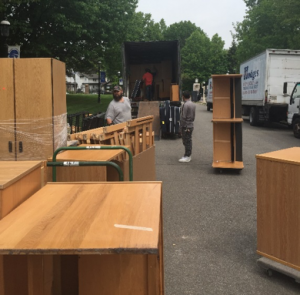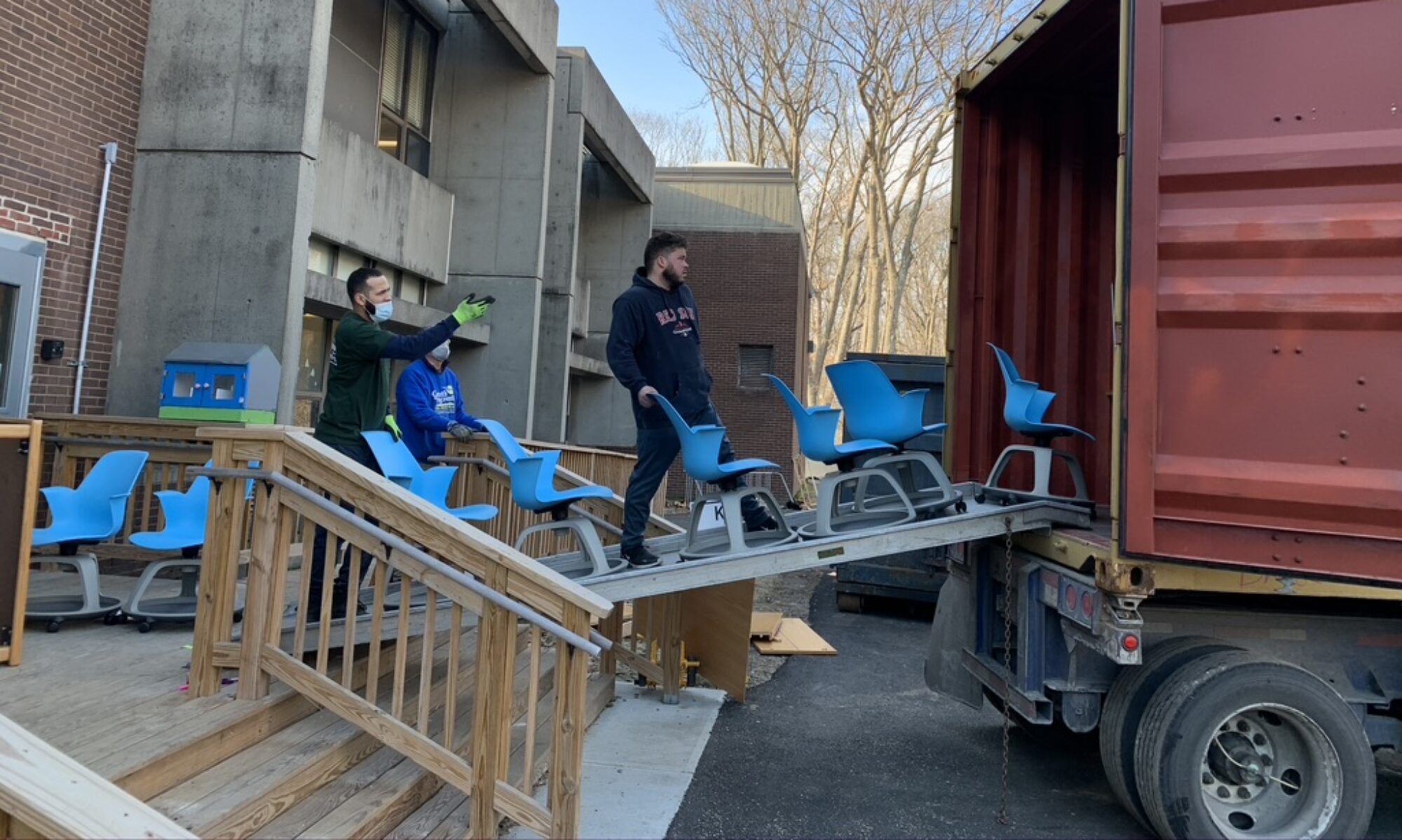 Situation: Replacing about 220 sets of dorm furniture, Seton Hall asked their furniture supplier to suggest an alternative to throwing their old furnishings away. Their furniture supplier and IRN have worked together many times in the past, so it was natural for them to give IRN a call.
Situation: Replacing about 220 sets of dorm furniture, Seton Hall asked their furniture supplier to suggest an alternative to throwing their old furnishings away. Their furniture supplier and IRN have worked together many times in the past, so it was natural for them to give IRN a call.
Material Composition & Quantity: 1,425 pieces in total, including 210-220 each of beds (with mattresses), desks, dressers, and wardrobes, plus about 250 chairs and 165 bookcases.
Setting: Suburban campus about 15 miles west of Manhattan.
Click here for a PDF of this case study
Overview: In early 2015, Seton Hall University confirmed an order for about 220 sets of new furniture destined to the school’s 6-story Boland Hall dormitory. Seton Hall asked their furniture supplier for help finding a sustainable alternative to disposing of the furnishings they were replacing.
Seton Hall requested a one-stop solution; they just wanted the old furnishings to go away, to the best possible use, with minimal hassle and disruption. They also required a tight schedule. All the furnishings had to be removed between a Thursday morning and the following Tuesday, with the weekend out of bounds because of commencement.
Composition:
Implementation: Apart from the split schedule, this was a straightforward project. There was no loading dock, but tractor-trailers could pull close to the dormitory. Two elevators were available, the only difficulty being that bed frames and mattresses had to be hand-loaded. Typical for an IRN project, the crew started on the top floor and worked down, dividing the crew into one team to break down the furniture and put it on dollies, a second team to move the furnishings outside and load trailers.
Destinations: IRN’s longtime partner World Vision accepted the Seton Hall inventory. The inventory was delivered first to a World Vision warehouse close to the project site. From there, World Vision re-packed into overseas shipping containers, which were then loaded and shipped to World Vision relief and development projects in four countries from Chad in central Africa to Mongolia in central Asia.
Cost: The cost to Seton Hall to manage the Bolton Dormitory furnishings for reuse was about $7,000, or 13% less than they would have paid to throw the furniture away.
With more than 1,500 projects completed, IRN has documented that the labor required to handle furniture for reuse is nearly the same as to throw the same furniture into dumpsters – sometimes a few percent more, sometimes less, depending on the inventory and site factors.
Project management and administration for reuse cost more than for disposal, because one needs to plan, make a match with charities, track, and report the final destination for the furniture, where managing for dumpsters takes no planning at all.
The major savings with reuse are in the actual disposition of the inventory. One trailer loaded for reuse holds as much as three or four large dumpsters. The price difference depends on the location, but in most U.S. markets IRN trailers cost 10% to 40% less than their dumpster equivalents. In metro New York, Seton Hall saved more than $8,000 in disposal fees by packing IRN trailers instead of dumpsters.


